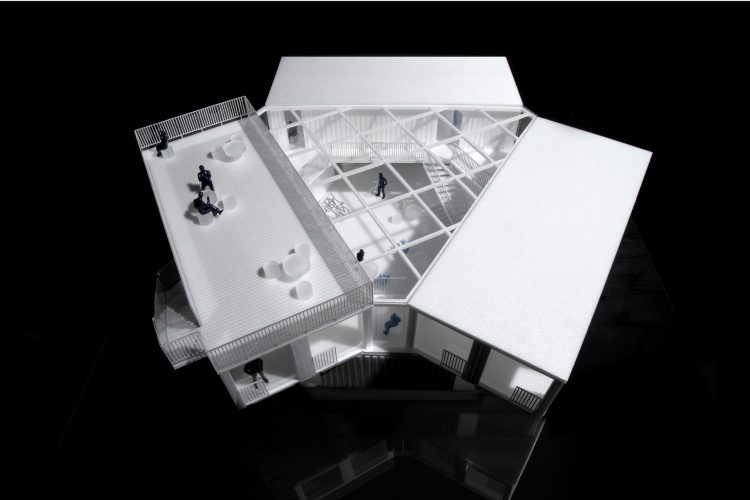One day, a project : Urban Rigger by BIG
In this depressing beginning of the week, where the cold assails us, my morning ramblings took me to København (Copenhagen in Danish, I had to google to understand) in Denmark. To put it bluntly, the project is not a discovery. It’s a big studio, a BIG, able to exploit known concepts and then push them through to completion (and that’s definitely rarer).
BIG’s proposal in the face of housing problems is to exploit low-cost containers, to assemble them on two levels (low densification) all around a central courtyard, to create a little history(s) and social interaction (don’t mess around anyway). One can imagine that the container is then easily ‘customizable’ according to the wishes of its owner, offering beautiful bay windows without having to worry about the structure (well, a container is well done).
But beyond the architecture of the project, which does not revolutionize “container projects”, it is the urban planning approach that pushed me to write.
BIG’s starting point was how to live in the ports of Copenhagen, considering that the land was becoming too expensive and saturated to build new housing. Where BIG goes further is by imagining these modules navigating from port to port, responding to specific needs and offering an alternative transport option. Real estate on the move, adaptable and modular thanks to a prefabrication process (container). Unlike floating hotels, not so different from the huge polluting liners we already know, BIG’s proposal integrates the notion of urban planning into its initial concept. Containers are built around a common space that can be developed. The possibilities of connections between the islands also offer a coherent model of city on the water, recreating places of passage, of pause, of contemplation, of activity.
After the conquest of the land, Man is therefore planning to settle on the seas. Artificial islands in Asia, Qatar or the Emirates had already given an idea of this desire to scrape up square metres, leading to colossal projects sensitive to natural risks. As Paul Virilio explained, each technological evolution or social transformation brings with it a new form of risk and disaster. The same is true for these projects on the seas. What will be the impact of such constructions? We know about shipwrecks, will it be the same for “houses on the water”?
Urban densification has created problems of desertification and impoverishment of certain territories. Off-land proposals, for all their relevance, encourage the creation of nodes on land air and sea while neglecting certain sectors. Good or not good, I confess that I am not in a position to give an opinion. Perhaps, by this means, we will participate in the preservation of certain spaces, sacrificing others to transform them into hives where it will still be necessary to invent how to live properly.
Would you like to be kept informed of new blog posts ?
Subscribe to our newsletter !
